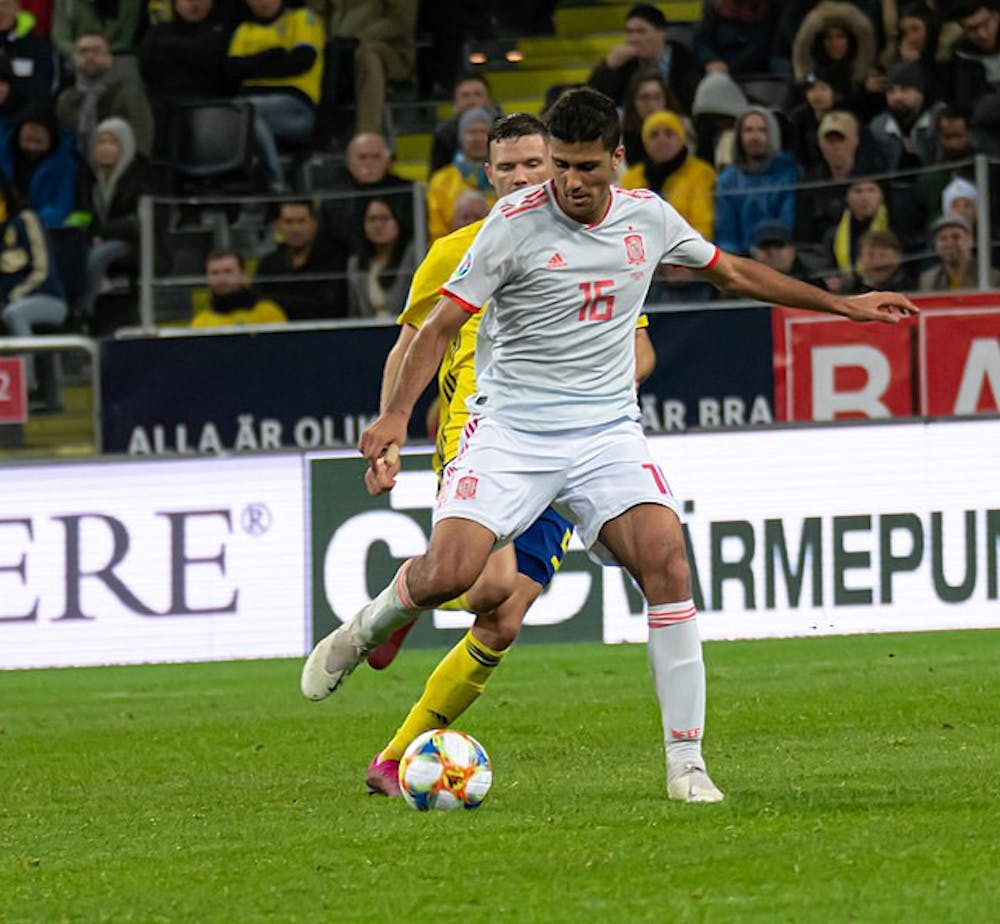After the “summer of soccer,“ players returned home from international duty as eagle-eyed fans awaited the returns of club leagues. And they roared back with a vengeance — thrilling games, star players and overall, an incredible level of competition.
There is an unfortunate side-effect of this: injuries. Since July, we have seen a shockingly large number of serious, season-ending injuries — Rodri, Dani Carvajal and Marc-André ter Stegen, to name a few. Whether you follow La Liga or the Premier League, the Bundesliga or Serie A, it’s been impossible to watch a match without seeing a player limp off the field, collapse in pain or sit down on the sidelines and signal for the medic team. Last year’s UEFA Champions League (UCL) winners, Real Madrid, ran a terrifying statistic: Los Blancos have experienced six ACL injuries in 15 months.
The situation is not much better in women’s soccer; in fact, according to one study, female players are two to eight times more likely to suffer an ACL tear. In the past few years, we have seen several star players succumb to this severe injury including Sam Kerr, Alexia Putellas, Beth Mead and Caroline Weir.
Additionally, once you’ve sustained a serious injury to a part of your body — be it a ligament tear, stress fracture or muscular injury — the risk of recurrence increases significantly. Take Bayern Munich’s Manuel Neuer as an example: He fractured his metatarsal bone in April of 2017, missing around 123 days of the season. After returning to the field in August, he suffered a re-fracture kept him sidelined for an additional 206 days. Similarly, F.C. Barcelona's Pedri González has endured six hamstring injuries in the last three seasons, missing a total of 435 days. Manchester City midfielder and Belgian captain Kevin de Bruyne — currently sidelined because of a recurring hamstring injury — has also missed hundreds of playing days due to a mix of muscular injuries, hamstring injuries and ligament tears.
Aside from the detrimental effects on players’ health and wellness, injuries also worsen the quality of the game. An injury has sidelined one of the leading contenders for the Ballon d'Or, Rodri. Several high-flying careers have been “blighted” by repeated spells on the sidelines: Arjen Robben, Jack Wilshere, Thiago Alcântara and Eden Hazard are just some of them. It’s disappointing to see stars miss out on several key matches of the season, whether you are a fan of their team or not.
But how do we prevent this? According to players, the only way to prevent increasing injuries is to play fewer minutes per season. Arsenal’s Beth Mead commented, in an article documenting her recovery, that there was a “steep jump” in how many minutes she has been playing each year, from “2,000-odd to 4,000-odd minutes” in just one season. Rodri and Carvajal both expressed their concerns over the ever-increasing number of games in the soccer calendar shortly before suffering their respective ACL tears. The former went further in an interview with The Guardian, explaining that the chance of a players’ strike continues to grow and that “not everything is money or marketing. It’s also the quality of the show.”
Players are concerned that more games and travel — tournaments are now being held in a more varied geographical landscape — could mean a higher injury risk. This is why their union, (Fédération Internationale des Associations de Footballeurs Professionnels, known as FIFPro), has now filed a legal case against FIFA to protest the expansion of the FIFA Club World Cup and the FIFA World Cup, saying that this will increase the risk to players' health and that it is “abusive” and “unjustified.”
Decreasing the number of games per season may help alleviate the injury problem. However, as highlighted by Italian sports journalist Gabriele Marcotti, there are complex issues and interests that affect the decision to change the number of games.
Another potential solution lies in prevention — investing in research and training regimens aimed at strengthening players’ fitness to meet the increasing physical demands. A promising initiative is Project ACL, launched in April of this year in the Women’s Super League. Whatever happens, we hope that the worst has passed and that we’ll see injuries slow down as we approach winter break.





